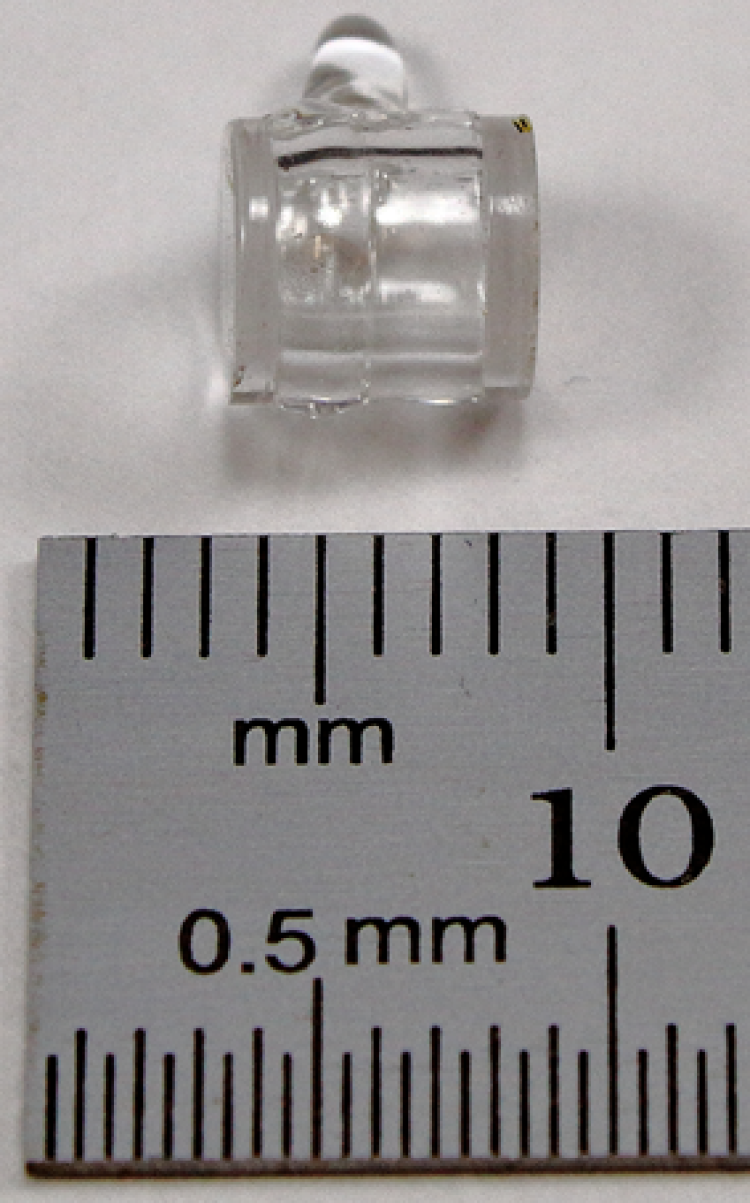Novel microwave sensor developed at CU Boulder

Vapor cell measuring about half a centimeter in length.
Researchers at CU Boulder and the National Institute of Standards and Technology are developing sensors based on technologies used in chip-scale atomic clocks and optically pumped magnetometers with sensitivity and accuracy of interest for wireless broadband antenna evaluation technologies. Senior Research Associate Vladislav Gerginov, PhD, from the Department of Physics PREP program who works with mechanical engineering Associate Research Professor Svenja Knappe, recently published a paper entitled, “An Atomic Sensor for Direct Detection of Weak Microwave Signals,” documenting the development of these sensors.
Sensors explored by Gerginov use two experimental techniques:
- Optical pumping into an atomic state with decreased spin decoherence
- Detection of an off-resonant probe light beam with polarization modulated at the frequency of the microwave field
Both techniques have been successfully executed in room temperature experiments to suppress the spin-exchange decoherence rate, perform quantum noise limited magnetometry, improve the sensitivity of RF magnetometers and entangle a record number of atoms.
Given the sensor’s small size and weight, low power, room-temperature operation, relaxed laser power and linewidth requirements and improved sensitivity rivaling that of sensors based on Rydberg atoms, these sensors present many opportunities for application. The fusion of Gerginov's sensor design with the microfabricated vapor cell technology explored in Knappe's laboratory would lead to the development of miniature sensor arrays for near-field microwave distribution studies.
Due to technology innovation, the demand for use of wireless broadband signals has soared, an area of opportunity for this research group. New types of antennae are being designed with reduced size and increased sensitivity, because spatial resolution, sensitivity and accuracy of measurements based on classical, conductive antennas are becoming insufficient.
The coherent detection of weak microwave signals has important application in emerging communication and radar applications. Additionally, the push for efficient coherent microwave-to-optical conversion and coherent detection of extremely weak and single-photon microwave fields is motivated by applications requiring quantum sensing and microwave qubits. Essential for emerging quantum technologies are coherent microwave-to-optical transducers for linking quantum devices such as microwave qubits and optical memories. Researchers hope to one day perform low-power coherent microwave-to-optical conversion without the need for atomic or cryogenic cooling.

